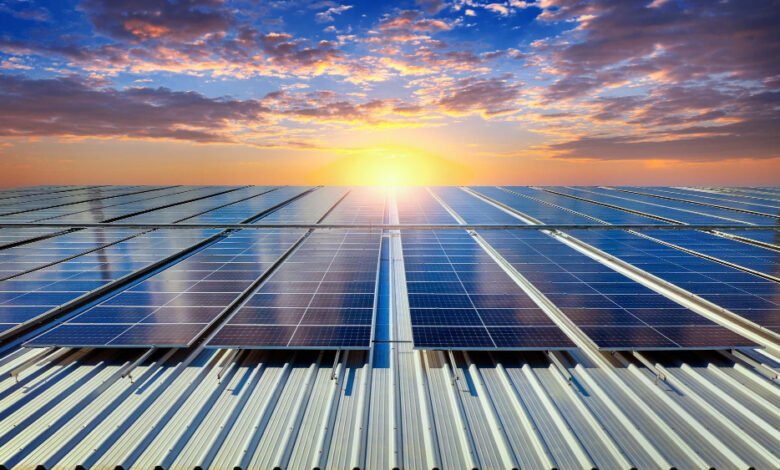
In the quest for sustainable energy solutions, solar power installation has emerged as a frontrunner, offering a clean, renewable alternative to traditional fossil fuels. From residential rooftops to sprawling solar farms, the installation of solar panels has become increasingly accessible and widespread, driven by technological advancements, environmental concerns, and economic incentives. In this comprehensive guide, we will explore the various aspects of solar power installation, from planning and design to implementation and maintenance, shedding light on the steps involved in harnessing the power of the sun.
Understanding Solar Power Installation
At its core, solar power installation involves the deployment of photovoltaic (PV) panels to convert sunlight into electricity. These panels, typically mounted on rooftops or ground-mounted structures, capture sunlight and generate direct current (DC) electricity through the photovoltaic effect. This electricity is then converted into alternating current (AC) using inverters, making it compatible with the electrical grid or onsite consumption.
Planning and Design
The first step in solar power installation is thorough planning and design. This involves assessing the site’s solar potential, determining the optimal location for panel placement, and evaluating the system’s size and capacity based on energy needs and available space. Factors such as roof orientation, shading, and local weather patterns must be taken into account to maximize energy production and efficiency.
During the design phase, engineers and solar professionals use specialized software to model the system layout, calculate energy output, and estimate costs. They also consider regulatory requirements, building codes, and permitting processes to ensure compliance with local regulations and obtain necessary approvals.
Procurement and Equipment Selection
Once the design is finalized, the next step is procuring the necessary equipment and components for the solar power installation. This typically includes solar panels, inverters, mounting hardware, wiring, and monitoring systems. The selection of equipment depends on factors such as system size, budget, energy goals, and site-specific conditions.
Solar panels come in various types, including monocrystalline, polycrystalline, and thin-film, each offering different efficiency levels and aesthetic options. Inverters play a crucial role in converting DC electricity into AC electricity and may include string inverters, microinverters, or power optimizers, depending on system design and performance requirements.
Installation and Implementation
With equipment in hand, the installation process can commence. This involves mounting the solar panels on rooftops or ground-mounted structures using racking systems and securing them in place. Wiring and electrical components are then connected to the panels, inverters, and electrical meter, ensuring proper functioning and safety compliance.
Installation crews follow industry best practices and safety protocols to minimize risks and ensure quality workmanship. Depending on the scale of the project, installation timelines can vary from a few days for residential installations to several weeks or months for larger commercial or utility-scale projects.
Testing and Commissioning
Once the installation is complete, the system undergoes rigorous testing and commissioning to verify performance and functionality. This includes checking electrical connections, conducting insulation resistance tests, and verifying system output against design specifications.
Commissioning also involves synchronizing the solar power system with the electrical grid, if applicable, and obtaining necessary approvals from local utility companies or regulatory authorities. Any issues or discrepancies discovered during testing are addressed and resolved to ensure optimal system operation.
Monitoring and Maintenance
After commissioning, ongoing monitoring and maintenance are essential to ensure the long-term performance and reliability of the solar power installation. Monitoring systems track energy production, system efficiency, and environmental conditions, allowing for early detection of potential issues and optimization of performance.
Regular maintenance tasks include cleaning the solar panels to remove dirt, dust, and debris that may accumulate over time and hinder sunlight absorption. Inspections of electrical components, wiring, and mounting systems are also conducted to identify any signs of wear, damage, or degradation.
Benefits of Solar Power Installation
The installation of solar power systems offers numerous benefits, both environmental and economic:
- Clean Energy: Solar power is a renewable energy source that produces electricity without emitting greenhouse gases or pollutants, helping to mitigate climate change and reduce air pollution.
- Cost Savings: Solar power installation can lead to significant cost savings on energy bills over the lifetime of the system, particularly as electricity prices continue to rise and solar technology becomes more affordable.
- Energy Independence: By generating their own electricity from solar power, homeowners, businesses, and communities can reduce their dependence on external energy sources and achieve greater energy independence.
- Return on Investment: Solar power systems have a relatively quick payback period and can provide a solid return on investment, particularly with available incentives such as tax credits, rebates, and net metering programs.
Conclusion
Solar power installation offers a pathway to a sustainable energy future, empowering individuals, businesses, and communities to harness the abundant energy of the sun and reduce their environmental footprint. From meticulous planning and design to meticulous installation and ongoing maintenance, the process of installing solar panels requires careful attention to detail, expertise, and commitment to quality. Delta power is the best solar company to provide solar power installation solutions and has been serving the nation through solar power generation from long time.
As technology advances and adoption rates continue to rise, solar power installation will play an increasingly prominent role in our transition to a clean energy economy. By embracing solar power and investing in renewable energy solutions, we can pave the way towards a brighter, greener future for generations to come.



